When I told a pedantic friend I was baking banana bread, he got himself in a bit of a tizz about the name. Because, while bananas and bread are a time-honoured combination – who doesn't love a banana sandwich, filled with squidgy, starchy fruit and cold, salty butter? – banana bread is, strictly speaking, more of a loaf-shaped cake. (My theory is that categorising it as a bread rather than a cake is a key part of the recipe's popularity, lending it a spuriously healthy air and thus legitimising its consumption at any hour of the day – it seems to be popular on breakfast menus in the States, where it originated. If anyone has any more information on the dividing line between breads and cakes however, please do pass on your wisdom below.)
Unlike the more honestly named carrot cake, which has a surprisingly long history, banana bread as we know it doesn't appear in cookbooks until the 1930s. Food history website foodtimeline.org suggests that although it's sometimes attributed to thrifty housewives looking to use up overripe fruit, all evidence points to the fact it was developed by banana companies to promote their wares – indeed "in the 1950s banana bread was actively promoted in nationally syndicated television cooking shows". Jane Grigson writes in her Fruit Book that it appeared in this country after the war, when West Indian bananas returned to the shops – presumably once everyone had gorged themselves on the fruit in its natural state, they began to seek other ways to make the most of it.
But despite this somewhat chequered past, the taste doesn't lie. Banana bread is utterly delicious, the natural sweetness of the fruit lending itself perfectly to baking – and, while it may not be exactly a health food, it is at least better than a fried banana and peanut butter sandwich ...
Bananas: is the time ripe?
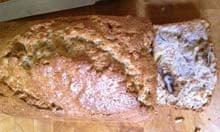
The accepted wisdom is that, to make good banana bread, you need bananas so ripe they practically dance into the oven of their own accord. Marcus Wareing specifically calls for "overripe" specimens in his recipe, but trawling through pages and pages of banana bread chat on US food forum egullet, I find numerous posts opining that, as k8memphis puts it, "while the charm of banana bread is that you are able to use up forgotten over-ripe bananas, this should never have become the gold standard".
I make Wareing's recipe with fruit that is almost black, the America's Test Kitchen version with pure yellow fruit (anything with a hint of green seems a step too far) and the rest with spotted brown bananas. The overripe versions are easier to mash, but don't give a more intense flavour once they're cooked. Banana bread may be a good way to use up old fruit, but it's not an absolute must.
Puréed, squashed or chopped?
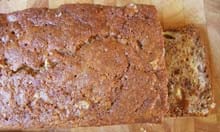
Charles Campion purées his bananas in a food processor in his method in Fifty Recipes to Stake Your Life On. Nigella, Wareing, the Hummingbird Bakery and pastry chef Claire Clark mash them "to a pulp", and the America's Test Kitchen recipe (billed by one fan as "the world's best banana bread - no kidding!") calls for them to be coarsely smashed, cautioning "don't purée – the banana needs to be chunky".
Campion's bread has a moist, almost gooey texture and an intense banana flavour, but I like the occasional sweet chunks of fruit in the America's Test Kitchen recipe, a few of which have also made it into the cakes containing mashed, rather than puréed fruit. I also prefer the lighter, fluffier texture of the dryer cakes – a mixture of coarse and finely mashed seems to be the ideal solution.
On the rise
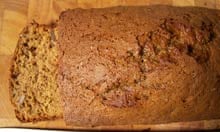
British banana bread recipes tend to call for baking powder, either directly, as in Nigella, Clark, Wareing and the Hummingbird's recipes, or in the form of self-raising flour, as in Campion's bread. America's Test Kitchen and Martha Stewart use only bicarbonate of soda – while Nigella and the Hummingbird add that in too for good measure. As Clark's recipe is the lightest and fluffiest, I'm sticking with baking powder.
Wareing uses strong bread flour, rather than the more common plain variety. Strong flour has a higher gluten content, which gives a better rise, and his cake does indeed have large pockets of air in it but it's not particularly impressive in the height department.
Sugar
White caster sugar is the most popular choice, but Clark goes for soft dark brown sugar, suggesting that if the flavour is too strong to suit your taste you can always do as the the Hummingbird does and substitute soft light brown sugar. I do find the dark brown sugar a little bit too much here – this cake's meant to be about the banana – but I like the caramel colour and flavour the light brown sugar brings to the table.
Fats
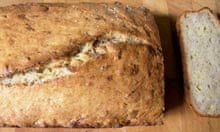
Campion and Wareing use softened butter, while Nigella, America's Test Kitchen and the Hummingbird melt it to a liquid before use. Clark, meanwhile, eschews it entirely in favour of vegetable oil in her recipe in Indulge, which, along as you skip the optional cream cheese frosting, makes hers a dairy-free option. Oil gives the cake a fluffy texture, while the cakes with butter are richer and slightly heavier. If you prefer a very light banana bread (or are lactose-intolerant) go for oil instead, but the softness of the butter wins me over.
America's Test Kitchen uses buttermilk in their mix, presumably to activate the bicarbonate of soda, and Campion adds a little milk. Both cakes are quite damp – I don't think the batter needs the extra liquid.
Method
With the exception of Campion's super easy bung-it-all-in-the-food-processor method, all my recipes fall into either the standard muffin or cake camps. For the former, the wet ingredients (eggs, melted butter or oil, banana) are mixed, and then quickly folded into the dry flour, sugar and raising agent, while Wareing deploys the creaming method, beating together the butter and sugar until light and fluffy before adding the eggs and dry ingredients. This, in theory, allows more air into the mixture, but actually his cake is one of the densest I bake.
Added extras
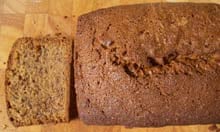
Nigella, Campion, America's Test Kitchen and Wareing all add vanilla extract to their batters, with Wareing throwing in some almond extract for good measure. The Hummingbird goes down a quite different route, flavouring their bread with cinnamon and ginger instead, while Clark keeps hers resolutely plain. The almond complements the flavour of the fruit, but is a little overwhelming – the vanilla blends in better, but, after tasting Clark's recipe, I don't think the bananas need either. The Hummingbird's spices also work well, but again, they block the flavour of the fruit, giving the whole thing rather a festive feel.
Nuts are a popular addition to banana bread – I love the crunch they provide, although I prefer Nigella, Wareing and America's Test Kitchen's walnuts to Clark's pecans; the slight bitterness is a good foil for the sweetness of the fruit. Nigella also throws in bourbon-soaked sultanas, which, although delicious, distract from the banana flavour. A good banana bread should be moist enough not to require extra juiciness.
Perfect banana bread
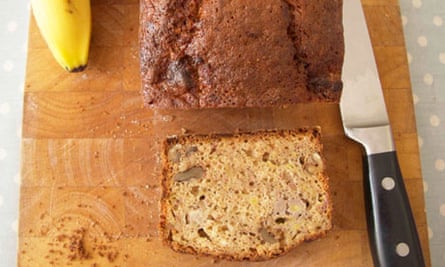
350g ripe bananas (peeled weight)
180g plain flour, plus extra for the tin
2½ tsp baking powder
1 tsp salt
160g soft, light brown sugar
2 eggs, beaten
4 tbsp melted butter, plus extra to grease, slightly cooled
50g walnuts, roughly chopped
1. Preheat the oven to 170C. Put two-thirds of the peeled banana chunks into a bowl and mash until smooth. Roughly mash the remainder and stir in gently.
2. Sift the flour, baking powder and salt into a bowl, and grease and lightly flour a baking tin about 21x9x7cm.
3. Put the sugar, eggs and melted butter in a large bowl and use an electric mixer to whisk them until pale and slightly increased in volume. Fold in the bananas and the dry ingredients until you can see no more flour, then fold in the walnuts.
4. Spoon into the tin and bake for about an hour until a skewer inserted into the middle comes out clean. Cool in the tin for 10 minutes before turning out on to a rack to cool completely.
Banana bread – what's the secret of this johnny-come-lately's success, and do you prefer the moist, squidgy sort, or the light, fluffy variety? Is it a teatime treat, or a weekend breakfast in your household, and can anyone explain if it's a bread or a cake?
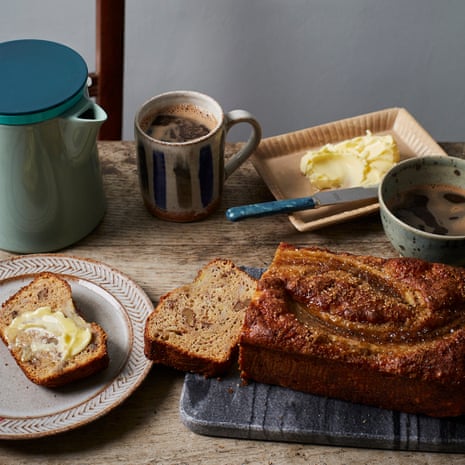
Comments (…)
Sign in or create your Guardian account to join the discussion